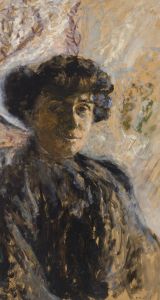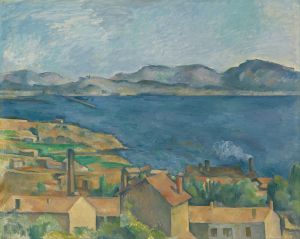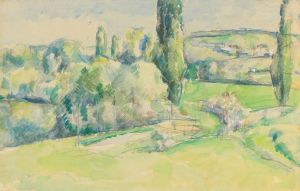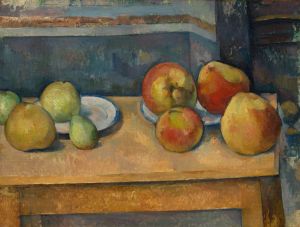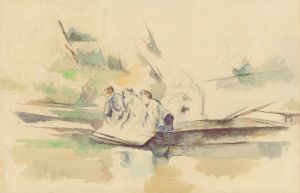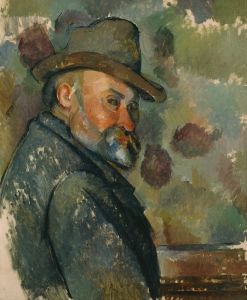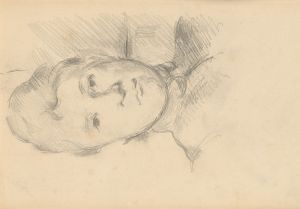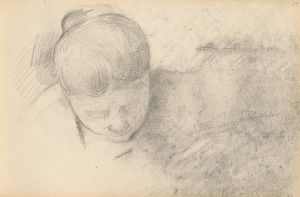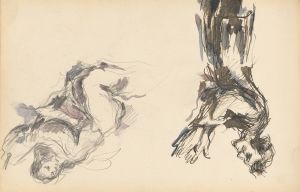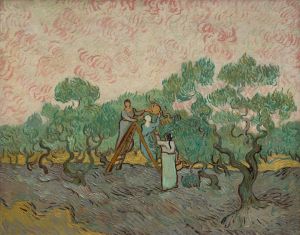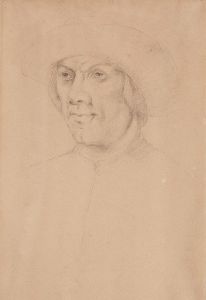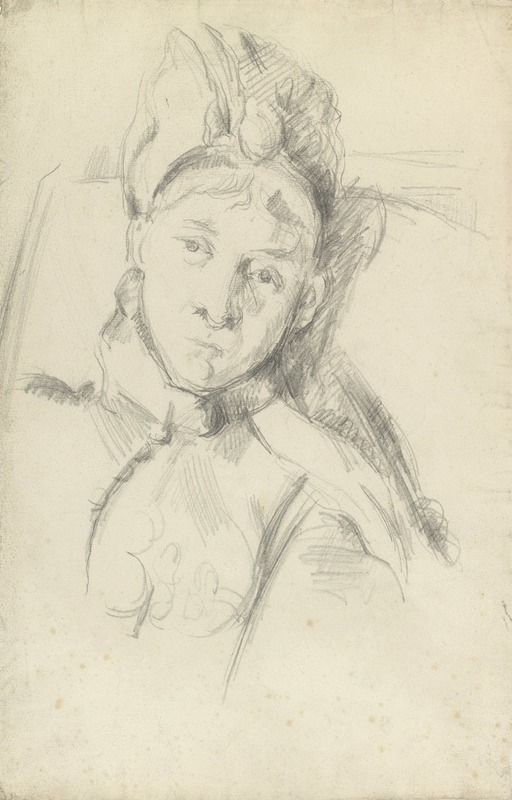
Portrait of Hortense Cézanne-Figuet, the Artist’s Wife
A hand-painted replica of Paul Cézanne’s masterpiece Portrait of Hortense Cézanne-Figuet, the Artist’s Wife, meticulously crafted by professional artists to capture the true essence of the original. Each piece is created with museum-quality canvas and rare mineral pigments, carefully painted by experienced artists with delicate brushstrokes and rich, layered colors to perfectly recreate the texture of the original artwork. Unlike machine-printed reproductions, this hand-painted version brings the painting to life, infused with the artist’s emotions and skill in every stroke. Whether for personal collection or home decoration, it instantly elevates the artistic atmosphere of any space.
Paul Cézanne's "Portrait of Hortense Cézanne-Figuet, the Artist’s Wife" is a significant work that reflects both the personal and artistic dimensions of the renowned French Post-Impressionist painter. This portrait is one of several Cézanne created of his wife, Hortense Fiquet, whom he married in 1886 after a long relationship. The painting exemplifies Cézanne's evolving style and his departure from the Impressionist movement, showcasing his unique approach to form and color.
Hortense Fiquet, born in 1850, was a model and bookbinder before meeting Cézanne in 1869. Their relationship was complex and often strained, partly due to Cézanne's difficult personality and his family's disapproval of their union. Despite these challenges, Hortense remained a central figure in Cézanne's life and work. She was the subject of numerous portraits, which provided Cézanne with an opportunity to explore his artistic ideas and techniques.
The "Portrait of Hortense Cézanne-Figuet" is characterized by Cézanne's distinctive brushwork and use of color. Unlike the Impressionists, who focused on capturing the effects of light and atmosphere, Cézanne was more concerned with the underlying structure of his subjects. In this portrait, he employs a series of small, deliberate brushstrokes to build up the form of Hortense's face and figure, creating a sense of solidity and permanence. The color palette is subdued, with earthy tones and muted hues that contribute to the painting's introspective mood.
Cézanne's treatment of Hortense in this portrait is both intimate and detached. While the painting captures her likeness, it also reflects Cézanne's analytical approach to his subject. Hortense is depicted with a calm, almost stoic expression, her gaze directed slightly away from the viewer. This sense of detachment is a hallmark of Cézanne's portraits, where the emotional connection between artist and subject is often secondary to the exploration of form and composition.
The background of the painting is typically Cézanne-esque, with a simplified, almost abstract quality that serves to emphasize the figure of Hortense. This approach to background and setting is consistent with Cézanne's broader artistic goals, which sought to reduce nature to its basic geometric shapes and harmonize them with the human figure.
Cézanne's portraits of Hortense, including this one, were not widely appreciated during his lifetime. Critics often found them lacking in the warmth and immediacy that characterized the work of his Impressionist contemporaries. However, Cézanne's innovative approach to form and color would later be recognized as a major influence on the development of modern art, particularly Cubism.
Today, "Portrait of Hortense Cézanne-Figuet, the Artist’s Wife" is valued not only for its artistic merit but also for its insight into Cézanne's personal life and his relationship with Hortense. The painting is part of the broader narrative of Cézanne's career, illustrating his transition from Impressionism to a more structured, analytical style that laid the groundwork for future artistic movements.
In summary, Paul Cézanne's portrait of his wife Hortense is a testament to his artistic vision and his complex personal life. Through his innovative use of form and color, Cézanne created a work that transcends its immediate subject, offering a glimpse into the evolving nature of art at the turn of the 20th century.





